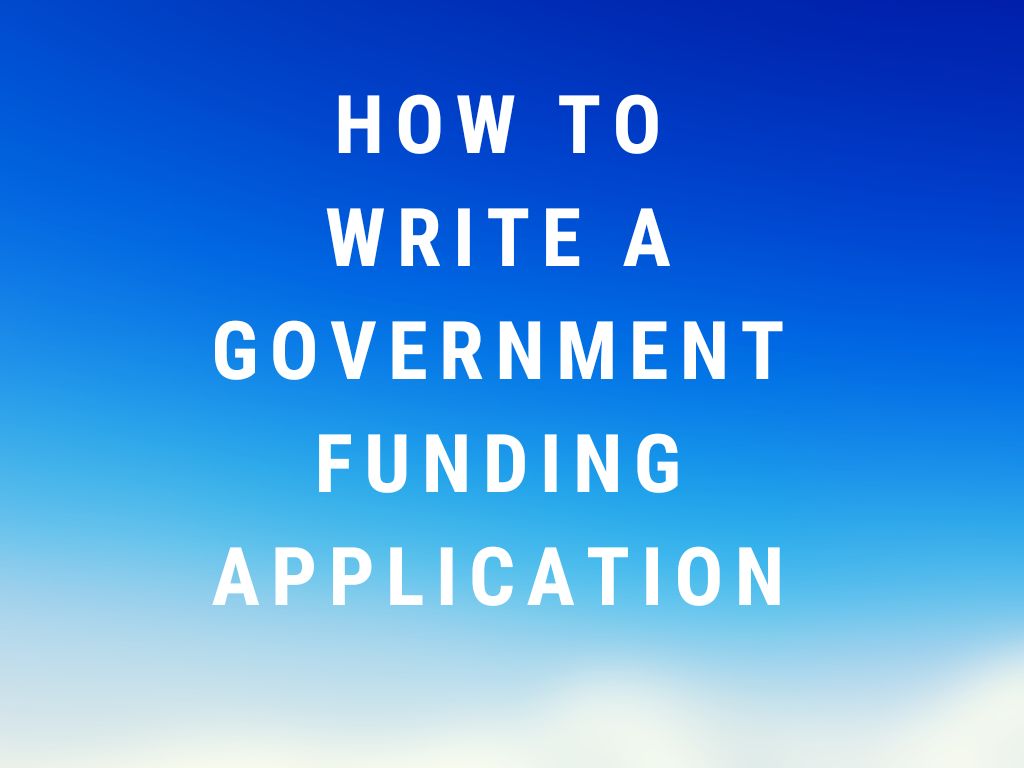How to Write a Government Funding Application
As a business owner, you know that government funding can be a game-changer for your startup. Securing funding can help you expand your operations, hire new staff, and scale your business.
But writing a government funding application can be a daunting task.
Where do you start?
What information do you need to include?
Don’t worry, we’re here to help. In this article , we’ll walk you through the process of writing a government funding application, step by step. We’ll also provide some tips on how to make your application stand out from the rest.
1. Know the Eligibility Criteria
Before you start working on your application, it’s important to make sure that you are eligible for the funding program. Each program has its own eligibility criteria, so be sure to review the requirements carefully.
The general criteria that most government funding agencies will look for will include:
- Location
- Industry
- Funding Needs
What this means is that there are government funding programs that are for certain locations only. Some may be focused on the local market; while some may be provincial or Canada-wide. Be sure to understand the program you want to apply to and which locations it covers.
Keep in mind that only federal programs cover all of Canada.
The next is the industry; not all government funding programs cover and provide funding for every industry. Certain government programs are in place to help specific industries thrive; and if you business doesn’t fit into this industry that the funds are provided for – do not bother applying.
Lastly, not every government funding programs funds every type of funding need. Some may cover general business startup expenses; while some may focus on specific expenses. Be sure to review the program criteria to determine what the program does and does not fund.
2. Gather the Required Documentation
Once you’ve confirmed that you are eligible for the program, it’s time to start gathering the required documentation. This will vary depending on the program, but it may include things like financial statements, copies of incorporation documents, and letters of reference.
In most cases, the required documentation will remain simple and only focus on your financial statement or financial projections; a business plan, and perhaps some invoices or statements to show costs.
Remember, the most crucial document for any government funding will be a business plan.
If you don’t have a business plan, you can use tools such as the Business Plan Builder to get this done. It is step by step guided and will ensure you follow the track of what government funding agencies across Canada want to see.
Alternatively, if you decide to write your own business plan from scratch, it is a good idea to follow the below 6 points to develop a proper business plan:
6 Key Steps to a Proper Business Plan:
- Outline your company’s history and current state
In your business plan, you will need to outline your company’s history and current state. This will include information such as when your company was founded, what products or services you offer, and your target market.
You should also include a brief overview of your management team and their experience in the industry. This will help the funding agency understand your company and its potential.
- Describe your products or services
In this section, you will need to provide detailed information about your products or services. This should include a description of what you offer, the benefits of your products or services, and how you plan to compete in the market.
- Outline your business strategy
In this section, you will need to describe your business strategy in detail. This should include information on how you plan to achieve profitability, expand your customer base, and penetrate new markets.
- Explain your funding needs
In this section, you will need to explain why you need government funding and how it will help your business grow. You should also provide a detailed budget outlining how the funds will be used.
- Provide financial statements
In most cases, you will need to provide financial statements including a balance sheet, income statement, and cash flow statement. You may also need to provide projections for the next three to five years.
- Include letters of reference
In some cases, you may be required to include letters of reference from clients or partners. These letters can help demonstrate that you are a credible business with a good reputation in the industry.
3. Write a Compelling Application
Now it’s time to start writing your application.
When doing so, be sure to clearly state why you are requesting funding and how you will use the money if you are successful. It’s also important to demonstrate how your business will contribute to economic growth and job creation. Be sure to back up your claims with data and research where possible.
Remember that each government funding agency may have a different type of application.
The best advice is to work with an expert to get help – as you definitely don’t want to be denied funding due to simple funding application mistakes that could have been avoided.
4. Submit Your Application
Once you have completed your application, all that’s left to do is submit it!
Make sure to double check all of the requirements and deadlines before sending off your application package—you don’t want it rejected because it was incomplete or late!
Government funding can be a great way to grow your startup—but only if you know how to apply for it successfully. By following the steps outlined in this blog post, you’ll be well on your way to writing a winning government funding application. Good luck!
SEARCHES RELATED TO APPLICATIONS FUNDING APPLICATINS
applications funding applicatins
funding
government funding application
I WANT START A BUSINESS IN...
IS THERE HELP IN MY INDUSTRY?
- Expansion Capital
- Funding For Equipment
- Business Acquisition Funding
- Consulting Services
- Hiring & Training Staff
- Management Support Services
- Manufacturing
- Mining
- Professional and IT Services
- Transportation and Warehousing
- Accommodation and Food Services
- Agriculture
- Construction
- Culture and Recreation
- Finance and Real Estate
- Forestry, Hunting and Fishing
- Health and Social Assistance





